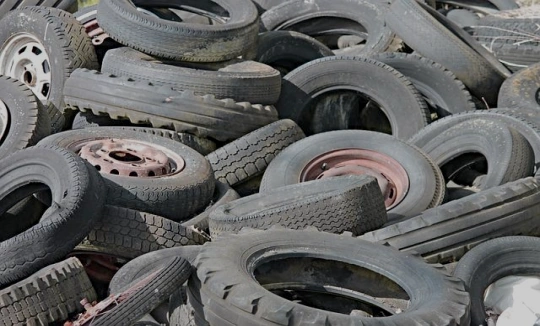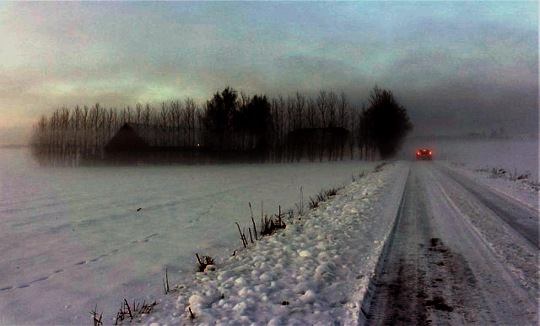Good brakes can mean the difference between making it home safely and ending up in the emergency room. What factors influence your car’s braking distance? The top ten factors that affect braking distance are listed below.
1. Distracted driving
According to the US Department of Transportation, distracted driving accidents killed over 3,000 people in the United States in 2020. As a result, as a driver, you cannot afford to take your eyes off the road. In an emergency, using mobile phones, sat nav, or tuning your radio can impair your decision-making ability. Try using Bluetooth on your phone or the voice commands in your vehicle.
2. Tire pressure
When traveling long distances, most drivers disregard their vehicle’s tire pressure. It not only affects how your tires wear out, but it is also a safety issue. For optimal grip, your tires should make more contact with the road.
Tyre pressure influences traction and how far your vehicle stops in an emergency. When adjusting tire pressure, use the total weight of your vehicle. Examine the tire wear—worn-out tire centers and edges, or sidewalls—for signs of overinflated and underinflated tires.
3. Faulty Brakes
If your brake pads or friction material are worn, your vehicle will travel further before stopping. Furthermore, if you have high brake heat from worn-out brakes or heavy braking, you should expect poor braking.

In emergency braking situations, ABS can assist you in maintaining control of your vehicle. While ABS does not necessarily reduce braking distance, it does assist you in maintaining control of your vehicle.
The brakes you use can sometimes have an effect on the car’s ability to stop. Is your vehicle equipped with drum or disc brakes? Drum brakes typically take longer to stop than disc brakes. Most modern vehicles are equipped with either full disc brakes or front and rear drum brake discs.
4. Tire Quality
Tire specifications influence the speed, braking, and fuel economy. What is the rating of the tire you purchased? Did you buy low-cost Chinese tires? Premium tires outperform low-quality tires in terms of traction, control, and stopping distance. Furthermore, purchasing high-quality brands such as Goodyear, Pirelli, or Michelin ensures a longer lifespan, aquaplaning prevention, and other safety features.
5. Driving Speed
Speed is the leading cause of poor braking distance. The greater the speed, the greater the distance traveled before stopping when you apply the brakes. The ability of the vehicle to stop and your reaction time are both affected by speed.
When you drive fast, you have a limited amount of time to react in case of an emergency. Maintaining a low speed allows you to quickly step on your brakes, increasing stopping distance. A speeding vehicle, on the other hand, requires more effort to stop due to the vehicle’s weight, type of brakes, and speed.
6. Tire Wear
Treads on tires allow them to grip the road surface. After a few months or years of driving, you will notice that the tread depth has decreased. If your tire tread reaches 1.6 mm, you must change your wheels. With new tires, you can achieve the best braking distance long before you reach the minimum tread depth.

A tire with an 8mm tread depth will stop at 84 feet, whereas the same car with a 1.6mm tread depth will travel 141 feet, nearly double the distance. The longer your stopping distance travels, the more your tires wear out. Check for signs of wear to ensure the best possible stopping distance, especially in bad weather.
7. Fatigue
Are you planning a long road trip? Make a driving companion. Long, monotonous roads, such as the interstate, can cause you to nod off behind the wheel. Aside from sleep, driving long distances can cause fatigue, which reduces your thinking distance. Make frequent stops to rest and regain your composure if you can’t find a co-driver for long trips. A 15-minute break every two hours will keep you alert for the duration of your journey.
8. Driving Conditions
Your driving conditions influence how quickly you can come to a stop. Unfortunately, you have no control over your road conditions.
Driving on icy or wet roads reduces the distance traveled before stopping when a driver applies the brakes significantly. Even if your tires or brakes stop on time, your vehicle may still slip on the slick road. In the winter or when driving on icy roads, keep your speed low to increase your traction coefficient.
On wet or muddy roads, you may have difficulty slowing down or stopping during the rain. When compared to a dry road, a slippery road reduces friction between the tires and the road. Weather conditions such as rain, ice, or standing water, among other things, can have an impact on the brake components. To improve traction, keep your speed low.
9. Poor Visibility
The visibility of the road has a significant impact on your stopping distance. Although visibility has no effect on your vehicle’s ability to stop, it does shorten your reaction time to potential road hazards. The longer it takes to spot road hazards, the longer it takes to hit the brake pedal. Applying emergency brakes while driving on a wet surface may result in your vehicle not stopping in time.

To avoid poor visibility, wash your dirty windscreen on a regular basis. Replace your wiper blades when you notice them becoming worn in bad weather. Is there snow on your windshield? Before you drive away, clean your windscreen.
10. Driving Under the Influence
Driving under the influence of alcohol or drugs is dangerous. Both substances make it difficult to judge the distance between a vehicle and other objects. Furthermore, they shorten your reaction time, increasing the time it takes for your car to come to a complete stop.
Prescription drugs commonly cause drowsiness, impaired vision, and hearing loss. Read the drug label before operating heavy machinery or driving a vehicle.
Brake Repair & Replacement Services in South East Austin, TX
Don’t take chances with your driving safety. Juke Auto provides expert brake repair and replacement. Our technicians know exactly what to do to keep it in top condition. We can handle everything from a simple brake inspection to a complete overhaul. To schedule an appointment, please call (512) 385-5853.
